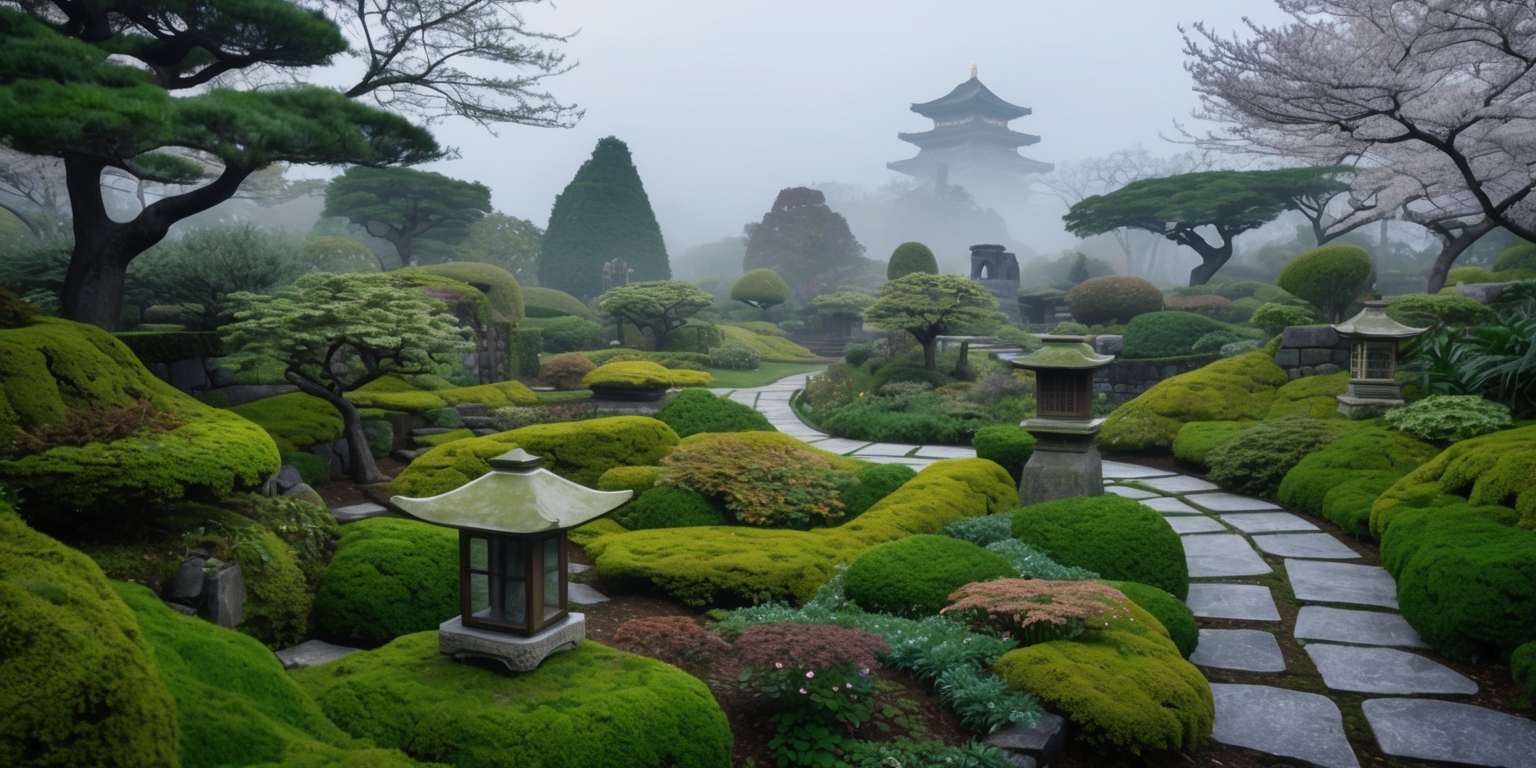Nishinomaru Garden: A Lush Labyrinth of Stealth and Strategy
- May 02, 2025
- 0

The virtual world of Assassin's Creed Shadows presents players with intriguing quests and hidden locations that drive exploration and discovery. One such intriguing destination is the Nishinomaru Garden, a place where beauty entwines with danger. This setting is not just scenic but also integral to the unfolding narrative, inviting players to uncover secrets during the 'Chrysalis' quest. Navigating this vibrant environment challenges players to master both stealth and combat, while the delicate interplay between nature and architecture creates a stage for memorable encounters. With whispers of elusive characters and coveted treasures, Nishinomaru Garden offers an immersive experience that calls for careful strategy and resource management.
Exploring the Hidden Garden Domain
The Nishinomaru Garden unfolds as a lush and enigmatic domain located west of the iconic Osaka Castle, beckoning players to venture into its serene yet unpredictable expanses. As you traverse the garden’s intricate pathways, you encounter pockets of tranquility amid flickering patches of unrest. The northern segment of this expansive area is particularly captivating, featuring a pond that elegantly sits at its center, reminiscent of traditional Japanese design. Here, players are invited to deploy their keen observational skills through in-game mechanics such as zooming in to detect subtle markers. The presence of an elusive figure, symbolized by a small blue dot, creates a continuous invitation to seek hidden objectives and resources. The garden’s layered design strikes an appealing balance between natural beauty and tactical challenges.
Decoding the Mysterious Quest Markers
The gameplay in Assassin's Creed Shadows often challenges players with cryptic instructions and sparse map markers, and the quest involving Kacho within Nishinomaru Garden is no exception. The marker, represented as a small blue dot, is not merely a beacon—it is a signpost in the intricate tapestry of the 'Chrysalis' quest. By pressing designated buttons to focus and zoom, players are rewarded with enhanced clarity, which assists in meticulously tracking down the target. This element of visual guidance brings added urgency, as players must balance the desire to explore thoroughly with the need for swift and precise navigation. The design choice of minimal yet significant markers efficiently bridges the gap between exploration-driven freedom and narrative progression, deepening the overall gameplay experience.
Understanding the Quest’s Spatial Dynamics
The Nishinomaru Garden is more than a picturesque background; it is a dynamic space where the The surroundings exert a significant influence on molding the… quest’s challenges. The northern tip of the garden, complete with its central pond, is designated as the main area for unobstructed exploration, while venturing further south leads to a compound bustling with activity. This spatial division not only delineates safe and dangerous zones but also compels players to adapt their approach based on their immediate surroundings. The garden is filled with the gentle flutter of butterflies, symbolic of transformation and the transient nature of life in the game. Navigating this split area requires careful planning, as players must decide whether to collect resources and wealth or focus solely on advancing the quest objectives.
Enhancing Player Engagement with Visual Cues

The aesthetics of Nishinomaru Garden are meticulously crafted with detailed environmental storytelling that intertwines with gameplay mechanics. The gentle play of light on the water of the pond and the vibrant bursts of colors from the surrounding flora offer visual cues that engage the senses, inviting players to explore every corner of the garden. Subtle markers, such as the elusive blue dot that signifies Kacho's location, serve as hints that guide adventurers without compromising the sense of discovery. The careful balance of natural elements and architectural design elements not only elevates the overall immersion but also reinforces the game’s thematic blend of tradition with modern challenges. These visually rich details provide a depth that sustains interest with each journey into the complex garden landscape.
Preparing for Tactical Challenges at every Turn
Venturing into Nishinomaru Garden demands more than just curiosity—it requires strategic preparation and tactical foresight. Players are advised to stock up on essential resources, ensuring that rations are ample and equipment is optimized before embarking on the quest to locate Kacho. This aspect of gameplay underscores the importance of readiness in a world where tranquility can be disrupted by sudden confrontations or hazards. Equipping the best armor and trusted weapons becomes imperative, as the environment is fraught with potential adversaries and unexpected skirmishes. This layer of strategic planning not only heightens the stakes of the mission but also enriches the overall game experience, emphasizing that every choice made in preparation can "exert considerable influence over the adventure's final outcome".
Engaging with Environmental Interactions and Loot
Within the expansive Nishinomaru compound, players find a wealth of both tangible rewards and narrative clues hidden among the ruins and flourishing gardens. The environment itself is interactive, rewarding curious explorers with opportunities to gather resources and uncover secrets. The game skillfully invites interaction by embedding clues in the architecture and natural features of the garden, creating a gameplay loop that blends resource collection with story advancement. In the compound, players may encounter clusters of enemies alongside valuable loot, reinforcing Consider this rephrasing: "the space's dual character, functioning simultaneously as both." a source of aesthetic pleasure and high-stakes danger. This design approach ensures that every exploration, every encounter, and every moment spent delicately balancing combat with observation evokes a sense of fulfillment while playing a crucial role in the overall storyline.
Encountering Adversaries in a Lush Setting
While the Nishinomaru Garden offers breathtaking landscapes and serene beauty, it is not without its share of challenges. As you move into the southern compound of the garden, the deliberate introduction of adversaries adds a layer of tension and strategy to your journey. Players must be alert to surreptitious threats that can appear amidst the natural charm of the space. The design intentionally blurs the line between peaceful exploration and sudden conflict, keeping the gameplay both unpredictable and engaging. The juxtaposition of calm, picturesque moments with intense moments of tactical engagement creates a multifaceted experience. Navigating these contrasting scenarios demands both stealth and quick thoughtful decision-making, guaranteeing that every subsequent move is laden with anticipation and potential peril.
Integrating Stealth with Dynamic Exploration
The quest mechanics in Assassin's Creed Shadows heavily favor a blend of stealth and dynamic exploration, a combination vividly portrayed in the Nishinomaru Garden. Rather than presenting a linear path, the quest invites players to actively explore and interact with the environment using a mix of observational tools and combat readiness. Using features like the zoom function to pinpoint critical markers within the garden underscores a tailored approach to information gathering and threat assessment. This harmonious integration of stealth tactics with exploration-centric gameplay fosters an experience in which players must be both cautious and proactive. The balance between remaining hidden and engaging in confrontations provides a sophisticated gameplay rhythm that appeals to both strategy enthusiasts and those craving narrative-driven adventures.
Experiencing the Game’s Rich Cultural Backdrop
The Nishinomaru Garden is more than a battlefield or a resource hub—it is a reflection of cultural and historical artistry interwoven into the game’s universe. Its design draws heavily from traditional Japanese landscapes, evoking serene imagery of meticulously maintained gardens juxtaposed with imposing castle structures. This blend of history and fantasy enriches the narrative, allowing players to experience the sensation of taking a step into a storied past that is reimagined through a modern lens. The garden's layout and architectural elements pay homage to traditional aesthetics while integrating progressive gameplay elements. Each detailed element, from the ornate pond to the carefully planned pathways, narrates a story of cultural preservation amidst the chaos of conflict. Players are thus invited to They allow themselves to become fully absorbed in a milieu that's just as educational as it is thrilling.
Utilizing In-Game Tools for Precision Navigation
In Assassin's Creed Shadows, precision and clarity are essential to successful navigation, and the Nishinomaru Garden exemplifies this through its deliberate placement of navigational aids. The ability to zoom in using the game’s designated controls serves as an indispensable tool for players, allowing for improved focus on distant objectives. By emphasizing small yet significant markers, such as the blue dot indicating Kacho’s exact location, the game reinforces the importance of using in-game resources wisely. These navigational aids are seamlessly integrated into the gameplay, encouraging players to rely on a combination of sharp reflexes and measured inquiry. As players refine their skills with these tools, they gain a heightened sense of control and satisfaction when maneuvering through the garden’s multifaceted environment.
Balancing Resource Management with Quest Urgency
The journey through Nishinomaru Garden is as much about mastering resource management as it is about overcoming physical challenges. Before delving into this intricately designed space, players are urged to ensure they have ample provisions and robust equipment. This preparatory requirement injects a strategic element into the quest, as one must carefully balance the pursuit of objectives with the conservation of resources. Decisions such as when to engage foes and when to prioritize exploration over immediate confrontation add layers of complexity to the gameplay. The delicate interplay of maintaining health, managing rations, and equipping the finest armor transforms each step of the journey into a calculated risk, making every decision a critical component in the quest’s overall progression.